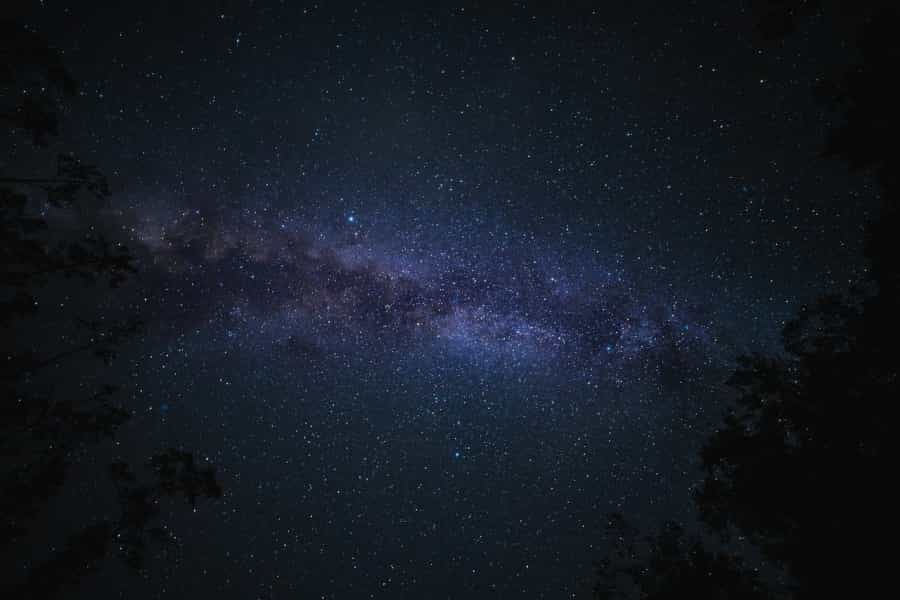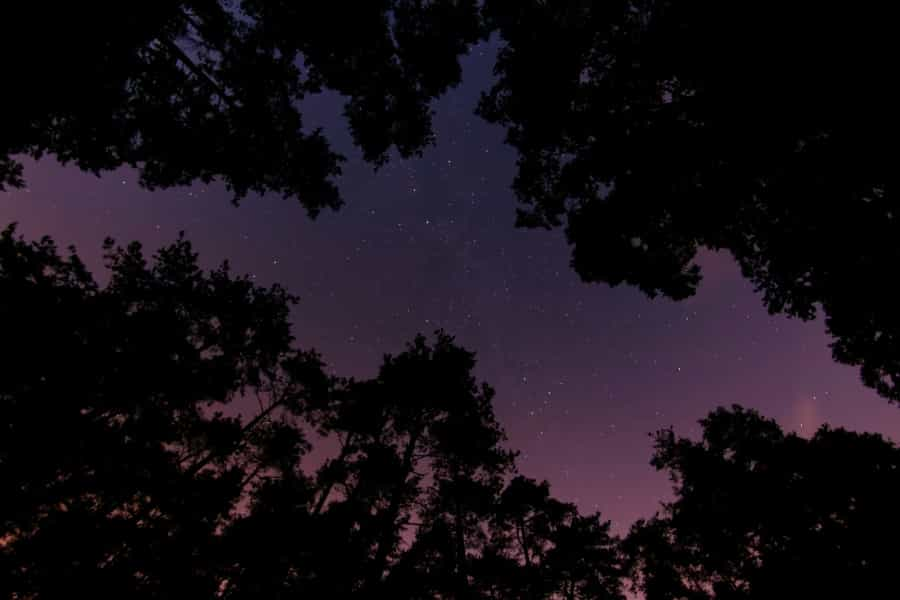Exmoor Stargazing

In 2011, Exmoor National Park became Europe’s first designated International Dark Skies Reserve, and with good reason – even a quick glance at this light pollution map reveals the region certainly deserved its accolade. This area of Somerset and north Devon has some of the darkest dark skies in the UK, and in fact anywhere in Europe.
This means that after dark on clear nights you can see many thousands of stars on Exmoor – far more than in most places around the country. Free from the polluting glow of street lamps, Exmoor’s night skies are a truly fabulous experience. Although stargazing is a year-round activity, the long, dark nights of winter offer the best opportunities to admire the Milky Way in all its shimmering glory with the naked eye.
Read on for Pitchup’s definitive guide to the best celestial displays in Exmoor National Park, and find out what the park authorities are doing to combat light pollution.
Benefits of reduced light pollution

Light pollution is caused by artificial light from our towns and cities and is characterised by the orange glow we often see on the horizon at night. This interference from light has a major effect on us by disrupting our sleep patterns, and on nocturnal wildlife that's dependent on total darkness to feed and reproduce. Exmoor’s status as Europe’s first dark skies reserve has seen many benefits for nocturnal insects, owls and bats, with all these species now thriving around the park.
Artificial light also has a dilatory effect on the climate as it increases carbon dioxide in the earth’s atmosphere.
How Exmoor retains its dark skies status
Initiatives to reduce ambient light in the national park have been introduced by the park authorities and include:
-
Protecting a core area of the national park covering 32 square miles (83 sq km). The land stretches from Brockwell Farm near Wootton Courtenay in the east to Challacombe Common in the west, and consists of open-access heather and grassland moors. There are only two occupied buildings within this region (both owned by the national park authority) and no development is allowed.
-
Working together with like-minded like-minded businesses involved in hospitality and tourism to provide a range of dark skies experiences for visitors while at the same time working to reduce light pollution.
- Raising awareness of the importance of dark skies with visitors at the national park centres in Dunster, Dulverton and Lynmouth.
How you can help
It’s not just the park authorities that can help preserve Exmoor’s dark skies. You too can do your part when stargazing.
-
Please only visit official sites like the ones mentioned below.
-
When out stargazing, use red-light torches or put phones on night-time settings.
-
Stay with a Dark Sky Friendly Business.
-
Take all your litter home with you, and leave no trace!
Best stargazing spots on Exmoor

The following are the most popular places for experiencing dark skies in the national park; there’s now also a short self-guided walk to one of the darkest spots on the moor – an excellent introduction if you want to introduce the kids to stargazing.
Dunkery Beacon
One of Exmoor’s official Dark Sky Discovery Sites, the beacon is the highest point in the national park at 519 m (1,702 ft) above sea level, and gives an unobstructed view of the surrounding night skies. Set yourselves up on the south side of the beacon, which is not affected by any residual light from Minehead. There’s free parking at a designated car park, a 20-minute walk from the beacon itself, but no other facilities are available.
Haddon Hill
You don’t even have to move out of the car park here, as there’s a flat grassy area with great overhead views. If you’re seeking solitude along with your dark skies experience, however, head west to the summit of Haddon Hill (about 20 minutes’ walk), from where you’ll be able to see the Milky Way on clear summer nights as well as the planets. There are loos on site, and parking is just off the B3190.
Wimbleball Lake
With stars reflecting in the lake, this is a particularly beautiful spot for stargazing on Exmoor, and is a firm favourite for anyone into astrophotography. Now an official Dark Sky Discovery Site, it has a stargazing hub overlooking the water, which has low-level seating and a flat stone terrace for the setting up of telescopes. There’s an onsite car park near the activity centre; payment is by app or card.
Exmoor Dark Sky Discovery Trail
Start point: Layby near Larkbarrow Corner. There is only limited parking so please don’t block roads or access to any gates.
Distance: 2 miles (3.2 km)
Time: Start at dusk and allow two hours with breaks for looking up at the celestial show.
The Exmoor Dark Sky Discovery Trail is a short, mostly level and family-friendly waymarked route starting on Wellshead Lane near Exford and leading across remote open moorland to the remains of now derelict Larkbarrow Farm, taking you through some of the darkest areas of Exmoor. Once at the farm, there are no artificial lights to be seen whatsoever so, weather permitting, you should see a magical canopy of stars dancing across the skies.
There may be cattle in the fields between May and September; be extra careful around them if they have calves with them.
Good to know: If you’d like more information, you can buy a comprehensive trail guide online.
Stargazing events and activities in Exmoor National Park
Regular dark skies events take place across the park, with the majority held in winter when the heavens are at their darkest.
Annual stargazing festival
Run by the national park authority, the annual Exmoor Dark Skies Festival takes place in late October and early November, and hosts around 50 events for families and amateur astronomers right across the park.
Family-friendly events
In winter, several hotels across the national park offer weekend stargazing breaks, as well as dark skies weekends led by experts like astronomer Terry Evans, who lives locally. There are occasional kid-centric planetarium sessions at Minehead Eye, and also a schedule of informative talks at Lynmouth Pavilion (booking essential) and Seven Fables bookshop in Dulverton in autumn.
Wild About Exmoor organises monthly stargazing sessions in conjunction with Exford Bridge Tea Room; events include supper or a barbecue and a short walk under starry skies led by a knowledgeable astronomer. If the weather is bad, sessions take place indoors using a virtual planetarium projector.
Dark Sky Telescope Hire runs the Exmoor Dark Sky Experience, leading putative astronomers out onto the moor to marvel at constellations, star clusters and galaxies visible to the bare eye – with telescopes available to hire as well.
Several other businesses also promote dark skies activities, including yoga sessions under the cosmos and guided walks fuelled by homemade pizzas and hot chocolate (sure to be a hit with the kids). In North Molton, on the edge of the park, The Poltimore Inn has an observatory where you can spot the planets, galaxies and shooting stars through several telescopes.
If you’re visiting the national park to try your luck with the dark skies, you can always increase your chances of seeing the Milky Way, shooting stars and constellations by staying overnight in the open air. Whether you’re after family-friendly Exmoor campsites or looking for a few more comforts at Devon glampsites, Pitchup has accommodation in all shapes and sizes to suit all pockets and requirements.
If you'd like to have the best views while sleeping under the stars, check out our guide to dark sky camping before planning your trip.